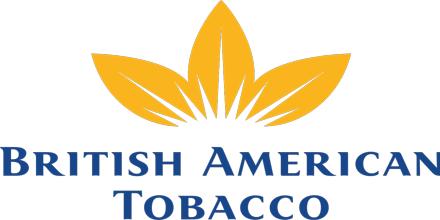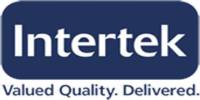Strategic Human Resource Management of British American Tobacco Bangladesh
British American Tobacco is the world’s most international tobacco group. Based in London, U.K. it is a market leader in more than 50 countries with the strength of 90,000 employees selling more than 320 brands in more than 180 markets worldwide.
Objective of BATB
The ultimate objective of British American Tobacco is to gain leadership in the global tobacco market. In order to attain this objective BATB is following some policies and regulations. They have been trying to diversify their product box. Already they have introduced different types products in the market and get success.
Functions of BATB
British American Tobacco Bangladesh has comprehensive operations in Bangladesh. They often term this as ‘seed to smoke’ which means we have operations that starts from growing tobacco to distribution of cigarettes. Their different functions work in an integrated approach with shared goal of achieving the company’s vision and objectives.
Corporate & Regulatory Affairs
British American Tobacco Bangladesh is a responsible company operating within a controversial industry. At British American Tobacco, Corporate & Regulatory Affairs (CORA) works to assure stakeholders, who directly or indirectly influence the business.
CORA functions with three main wings:
- Managing Regulations.
- Promoting Corporate Social Responsibility.
- Driving Corporate Communications.
Leaf
The Leaf Department is responsible for purchasing, processing, packing, shipping, and store leaf.
Essentially, it is the Leaf Department’s job to ensure a secure, continuous and consistent supply of tobacco at the best cost and right quality (as required by our Blenders) to maintain the correct taste of final products for the consumer. Therefore, the Leaf Team’s skills make a significant contribution to the ongoing success and reputation of our brands.
Achieving this objective demands more than simply buying tobacco. The team manages the tobacco all the way from the grower’s selling floor to input into factory production.
A career in Leaf offers variety and responsibility. Our people are not just dynamic Managers, they are able to adapt to a multitude of environments and cultures. In addition, while an agricultural science background is a pre-requisite, extensive training in tobacco growing, buying and processing will be provided, involving initial farm training in Bangladesh.
Information Technology
With the emergence of super information highway and the ever evolving technological environment, a competitive advantage is created for our business. At British American Tobacco Bangladesh, we have a robust Information Technology team which provides critically important support service to all the other departments in BATB.
A career in Information Technology could see you contributing to BAT Bangladesh in a whole range of ways, from the general application of IT to specific advice on hardware and software; from the application of telecommunications for voice, data and video to solving complex, strategic business challenges in the internal external environment.
While a robust Information Technology infrastructure is a vital component of a dynamic and world class organisation, our people also have the imagination to create whole new ways of adding value to our business. Information Technology includes business area management, architecture & service delivery and IT Management.
Research methodology
Statement of the problem
The problem of the report is to focus about the strategic issue in HRM. Different matters have been discovered in this report. We have selected British American Tobacco Bangladesh (BATB) for our study. The key issue of this report is deliver some information of how a multinational firm is practicing SHRM.
Rationale of the study
Our honorable course teacher has given a task to know about the practical situation of SHRM. As a student of MBA program in HRM, we should have a clear concept about different issues of SHRM. Each of the courses of MBA program must have a report work and it carries a good marks. Not only that but also this type of works helps us to know about the reality and relation between theory knowledge and practical knowledge.
Objective of the study
A broad objective of the study is to:
Study and understand the concept “Strategic human resource management” through a practical knowledge.
Specific objectives of the study are to:
- To have a clear knowledge about the different issues of SHRM in BATB.
- T o know about the strategic decision making process.
- To compare between theory knowledge and practical knowledge of SHRM..
- To realize practical scenario of SHRM in a multinational company.
Data collection
Data collection is one of the most important and preliminary part of report writing. Without collecting accurate and sufficient data a report can’t be successful.
Primary sources
Main source of primary data are oral conversation with the different groups, as given below:
- Informal conversation with some of our friends working in BATB.
- Formal and informal conversation with the HRD staffs.
- Practical observation of different projects of the members.
- Conversations with the center heads and the center mangers.
- Practical conversation with the employees.
- Practical inspection of the developments of the members.
- Formal conversation with the Head Office staffs.
Secondary sources
In the first part of the report, secondary data are used. The main sources of the secondary data are:
- Different text books.
- Different articles.
- Materials provided by BATB.
- Annual report of BATB.
- Audit report, etc.
Data analysis
After collecting the information, we have analyzed jointly. In this step we have followed the following steps:
- Organized the raw data into a meaningful format.
- Classified the information on the basis of our requirement.
- Deleted the unnecessary information.
- Edited clerically as correct as possible.
- Transferring information into computer for presentation.
Data presentation
“A picture is worth a thousand words.”
The most effective way of presenting data is said to be graphical presentation which is popularly known as ‘visual aids’. It is a picture or diagram used to clarify a complex point or to emphasize a message. Several types of graphic aids may be useful in research reports, such as tables, charts, maps, and diagrams.
Tables
Table is a graphic aid generally used for presenting numerical information, especially when such information can be arranged in rows and columns. Each table should include the followings –
- Table number
- Title
- Bannerheads and stubheads
- Footnotes
- Source
Charts
Chart is a graphic aids used to translate numerical information into visual form so that relationships may be easily understood. Each chart should include the following-
- Figure number
- Title
- Explanatory legends
- Source and footnotes
Findings of the study
Nature of SHRM
Strategic human resource management is a complex process which is constantly evolving and being studied and discussed by academics and commentators. Its definition and relationships with other aspects of business planning and strategy is not absolute and opinion varies between writers. The definitions below are from the CIPD book Strategic HRM: the key to improved business performance1 within which there is comprehensive coverage of the various definitions and approaches to HRM, strategy and strategic HRM.
Strategic HRM can be regarded as a general approach to the strategic management of human resources in accordance with the intentions of the organisation on the future direction it wants to take. It is concerned with longer-term people issues and macro-concerns about structure, quality, culture, values, commitment and matching resources to future need. It has been defined as:
- All those activities affecting the behaviour of individuals in their efforts to formulate and implement the strategic needs of business.
- The pattern of planned human resource deployments and activities intended to enable the forms to achieve its goals.
Strategic HRM can encompass a number of HR strategies. There may be strategies to deliver fair and equitable reward, to improve performance or to streamline structure. However, in themselves these strategies are not strategic HRM. Strategic HRM is the overall framework which determines the shape and delivery of the individual strategies.
Boxall and Purcell argue that strategic HRM is concerned with explaining how HRM influences organisational performance. They also point out that strategy is not the same as strategic plans. Strategic planning is the formal process that takes place, usually in larger organisations, defining how things will be done. However strategy exists in all organisations even though it may not be written down and articulated. It defines the organisation’s behaviour and how it tries to cope with its environment.
Strategic HRM is based on HRM principles incorporating the concept of strategy. So if HRM is a coherent approach to the management of people, strategic HRM now implies that that is done on a planned way that integrates organisational goals with policies and action sequences.
Recruitment & selection
Recruitment is the primary and very imporatnt function of SHRM
The main sources of recruitment are:
- Internal promotion and internal introductions (at times desirable for morale purposes)
- Careers officers (and careers masters at schools)
- University appointment boards
- Agencies for the unemployed
- Advertising (often via agents for specialist posts) or the use of other local media (e.g. commercial radio).
Where the organization does its own printed advertising it is useful if it has some identifying logo as its trade mark for rapid attraction and it must take care not to offend the sex, race, etc. antidiscrimination legislation either directly or indirectly. The form on which the applicant is to apply (personal appearance, letter of application, completion of a form) will vary according to the posts vacant and numbers to be recruited.
Before letters of appointment are sent any doubts about medical fitness or capacity (in employments where hygiene considerations are dominant) should be resolved by requiring applicants to attend a medical examination. This is especially so where, as for example in the case of apprentices, the recruitment is for a contractual period or involves the firm in training costs.
Interviewing can be carried out by individuals (e.g. supervisor or departmental manager), by panels of interviewers or in the form of sequential interviews by different experts and can vary from a five minute ‘chat’ to a process of several days. Ultimately personal skills in judgment are probably the most important, but techniques to aid judgment include selection testing for:
- Aptitudes (particularly useful for school leavers)
- Attainments
- General intelligence
In more senior posts other techniques are:
- Leaderless groups
- Command exercises
- Group problem solving
Strategies for recruitment & selection
BATB see recruitment as a part of their business strategy, ensuring that their company is equipped with managers of the highest caliber who can build their future. It is a long-term strategic exercise to continually improve the quality of management with a consistent focus on future requirements.
Year after year, they select, train and develop some of the brightest and most talented graduates.
Recruitment policy
- British American Tobacco Bangladesh has been in e-resourcing since 2002. They focus on e-based advertisement for more visibility and transparency beside the conventional print media. All recruitment related notices are posted on the www.bdjobs.com website. Candidates are required to fill up the blank resume format provided in the website. A well-structured and systematic selection procedure is followed to get the most suitable candidate. Following the selection procedure, pre-employment medical examination and reference checks are done.
- They entertain application from recognized universities from home and abroad.
- Applicant must be a citizen of Bangladesh.
- They encourage students with good academic track record to apply.
- They are not prejudiced against race, sex, religion, age etc. Positions will be offered to the candidate on the basis of his/her ability and the requirement of the company.
- If the one’s application is successful, he/she will be invited to a preliminary interview which will be taken by a member from the function to which he/she has applied and a member of the Human Resource team. This is a chance for him to find out more about them, as it is for us to find out whether he/she has the competencies they are looking for.
- As a final candidate, the person will be invited to a specifically designed British American Tobacco assessment centre. This will provide him the opportunity to demonstrate his/her skills and suitability through his/her performance in a number of participative and individual exercises. One will also have the opportunity to meet their managers and to gain first hand experience of what it is like to work for British American Tobacco Bangladesh. Regardless of the outcome, participants find it a unique opportunity to demonstrate their strengths.
- If one gets through the Assessment Centre, he/she will be recommended to the respective Heads of Functions for a final Interview.
- They are committed to keep the interviewee informed of his/her progress through every step of the selection process.
Strategic choices usually made
The strategic choices made by BATB are very clear. These are:
- They do not make a difference between man and woman; majority and minority etc.
- BATB both make and buy employees. At the entry level they prefer fresh graduates and at the middle and top level they prefer the skilled people.
- They provide a high for recruitment and training. Their arrangement of recruitment involves a set of steps mentioned earlier.
- BATB always follows the updated techniques and technologies in their recruitment system.
- They recruiting methods involve both internal and external. It varies from situation to situation.
Training and development of human resources
In general, education is ‘mind preparation’ and is carried out remote from the actual work area, training is the systematic development of the attitude, knowledge, skill pattern required by a person to perform a given task or job adequately and development is ‘the growth of the individual in terms of ability, understanding and awareness’.
Within an organization all three are necessary in order to:
- Develop workers to undertake higher-grade tasks;
- Provide the conventional training of new and young workers (e.g. as apprentices, clerks, etc.);
- Raise efficiency and standards of performance;
- Meet legislative requirements (e.g. health and safety);
- Inform people (induction training, pre-retirement courses, etc.);
From time to time meet special needs arising from technical, legislative, and knowledge need changes. Meeting these needs is achieved via the ‘training loop’. (Schematic available in PDF version.)
The diagnosis of other than conventional needs is complex and often depends upon the intuition or personal experience of managers and needs revealed by deficiencies. Sources of inspiration include:
- Common sense – it is often obvious that new machines, work systems, task requirements and changes in job content will require workers to be prepared;
- Shortcomings revealed by statistics of output per head, performance indices, unit costs, etc. and behavioral failures revealed by absentee figures, lateness, sickness etc. records;
- Recommendations of government and industry training organizations;
- Inspiration and innovations of individual managers and supervisors;
- Forecasts and predictions about staffing needs;
- Inspirations prompted by the technical press, training journals, reports of the experience of others;
- The suggestions made by specialist (e.g. education and training officers, safety engineers, work-study staff and management services personnel).
Designing training is far more than devising courses; it can include activities such as:
- Learning from observation of trained workers;
- Receiving coaching from seniors;
- Discovery as the result of working party, project team membership or attendance at meetings;
- Job swaps within and without the organization;
- Undertaking planned reading, or follow from the use of self–teaching texts and video tapes;
- Learning via involvement in research, report writing and visiting other works or organizations.
So far as group training is concerned in addition to formal courses there are:
- Lectures and talks by senior or specialist managers;
- Discussion group (conference and meeting) activities;
- Briefing by senior staffs;
- Role-playing exercises and simulation of actual conditions;
- Video and computer teaching activities;
- Case studies (and discussion) tests, quizzes, panel ‘games’, group forums, observation exercises and inspection and reporting techniques.
Evaluation of the effectiveness of training is done to ensure that it is cost effective, to identify needs to modify or extend what is being provided, to reveal new needs and redefine priorities and most of all to ensure that the objectives of the training are being met.
The latter may not be easy to ascertain where results cannot be measured mathematically. In the case of attitude and behavioral changes sought, leadership abilities, drive and ambition fostered, etc., achievement is a matter of the judgment of senior staffs. Exact validation might be impossible but unless on the whole the judgments are favorable the cooperation of managers in identifying needs, releasing personnel and assisting in training ventures will cease.
In making their judgments senior managers will question whether the efforts expended have produced:
- More effective, efficient, flexible employees;
- Faster results in making newcomers knowledgeable and effective than would follow from experience;
- More effective or efficient use of machinery, equipment and work procedures;
- Fewer requirements to implement redundancy (by retraining);
- Fewer accidents both personal and to property;
- Improvements in the qualifications of staff and their ability to take on tougher roles;
- Better employee loyalty to the organization with more willingness to innovate and accept change.
Training program at BATB
Training and Development is an ongoing process in British American Tobacco Bangladesh with the personal and professional development of their talent pool seen as a top priority in British American Tobacco Bangladesh.
They offer both on-the-job and off-the-job at both theoretical and practical levels with training and development opportunities provided through a range of local, Regional and International Training programmes that include training and development programmes at both functional and managerial levels.
“British American Tobacco Bangladesh’s approach to personal development is quite special”, said by the director of “The Leadership Trust’s International Programme” The Leadership Trust a globally recognized provider of leadership development. The primary focus on supporting personal development is unique, even from a global perspective, having worked with many leading multinational organizations. It is quite rare to see investment made at this level, and on this scale, with the prime focus being upon the personal development of the company’s key asset; its people.
Their Training and Development enables their employees to discover their own personal leadership skills and qualities in an enterprising, safe and supportive learning environment, which make working with British American Tobacco Bangladesh’s talented and emerging leaders both a pleasure and a privilege.
Promotional strategy
BATB always try to follow a logical promotional strategy. Logical strategy means what is fair, that is done. Every employee is promoted on the basis of their skills, qualification and experiences, innovativeness and some other criteria.
Career development strategy
Career development is the umbrella of a three stage process:
- Career planning (Self-assessment; Development Planning)
- Self development (Monitoring, Networking)
- Job search (Resume, Cover Letter, Informational Interview, and Job Interview).
In BATB, Career development is a self-initiated process with support and resources provided by managers and the organization.
Strategic pay, rewards and benefits
The overriding objective of the British American Tobacco remuneration policy is to reward the achievement of corporate and individual goals by linking success in those areas to the group strategy: a balanced approach to achieving growth, improving productivity, managing the business in a responsible manner and developing a winning organisation. The delivery of strategy is measured by the Key Performance Indicators (KPIs) and Business Measures set out and described in the section of the Annual Review. The continued focus by the Executive Directors of British American Tobacco and the members of its Management Board on driving all four elements of the strategy, will continue to build a sustainable business.
In order to strengthen the alignment of executive remuneration to the generation of shareholder value, a balance is maintained between the short and long term elements of the structure.
Salary
Salaries for the Executive Directors and members of the Management Board are reviewed annually or on a significant change of responsibilities. In deciding appropriate salary levels, and to ensure competitive positioning, Executive Directors’ salaries are benchmarked against a mid-market level of main board directors from the Salary Comparator Group described above. Where necessary, additional reference is also made to published salary data, including that for positions for companies in the Salary Comparator Group.
Matched salary positions are identified and compared using factors chosen to cover comparative reporting levels, revenue, international responsibilities and main board membership. This enables a mid-market assessment and a ‘competitive range’ (typically 15 to 20 per cent either side of the assessment) to be reported to the Committee, which will then make judgements within this range depending on individual performance and experience.
Salaries of members of the Management Board are reviewed on the basis of a mid-market comparison for equivalent management board roles. Similar principles are applied to the salaries of senior managers and, below this level in the organisation, salary scales are graded with reference to market conditions whilst individual salary increases are linked to performance.
During 2006, the Committee continued to recognise that the requirements of recruitment or retention may on occasion justify the payment of a salary outside the range regarded as appropriate for a particular position.
In addition to basic salary, the Executive Directors and members of the Management Board receive certain benefits in kind, principally a car or car allowance and private medical and personal accident insurance. The Executive Directors also receive the benefit of the use of a driver.
Award levels
The Remuneration Committee continues to maintain a responsible approach to benchmarking and aims to set the total compensation opportunity for Executive Directors within the market competitive range, but with a conservative overall positioning. As part of the Review, the Committee decided to maintain a simple, focused incentive structure with only two elements of variable pay. This methodology is in contrast to a number of FTSE 100 companies which may operate two or, in a few cases, three different long term incentive plans in the same year. The Remuneration Committee believes that the Company’s approach will provide a clear message to participants of what is required and will be transparent to shareholders.
The Remuneration Committee has an established peer group for benchmarking purposes, made up of FTSE 100 companies with a consumer goods focus, an international spread of operations and competitors for top management talent. This group of UK listed companies (the Salary Comparator Group) has been used for a number of years to ensure that base salaries and total compensation continue to be market competitive and is subject to annual review.
The opportunity provided by the total package was compared against the Salary Comparator Group on both an expected and projected value basis, taking into account the value of the LTIP Dividend Equivalent. Under both these approaches, the total compensation opportunity for the Executive Directors, and in particular the Chief Executive, was positioned appreciably below the mid-market.
To ensure that remuneration levels remain competitive (subject to the approval of shareholders), awards under the New LTIP will therefore be increased from 175 per cent to 250 per cent of base salary for the Chief Executive, and from 125 per cent to 200 per cent of base salary for the Finance Director and the Chief Operating Officer. In this way, the total package continues to be positioned appropriately against the market.
The level of award for members of the Management Board will also be increased from 125 per cent of salary to 150 per cent of salary.
In order to provide flexibility and sufficient capacity for future awards over the life of the Plan, the individual limit will be increased to 300 per cent of salary. The Remuneration Committee does not anticipate that awards will be made up to this limit in normal circumstances, and there is no current intention to utilise this limit by making awards in excess of the proposed levels. The Remuneration Committee will advise shareholders in advance of any change in the current proposed award levels, and any such change will be disclosed in the Remuneration Report.
Other benefits
Equal opportunity and diversity policy
This policy ensures Equal Opportunity & Diversity to all who are working at British American Tobacco Bangladesh. British American Tobacco Bangladesh, is committed in providing Equal Opportunity and promoting Diversity through ensuring that no discrimination is being done to any employee and any job applicant based on age, ethnicity, gender, race, religion, smoking habits or disability- subject to the inherent requirements of the role to be performed, level of performance of the individual and viability of the job in respect to the state of the business.
Maternity leave policy
In BAT Bangladesh they value their employee’s personal priorities. They allow maternity and paternity leave in their organisation. Their maternity leave of 6 months has allowed their female manager to balance her career aspiration with her role as a mother. They also have a provision for 2 weeks paternity leave policy for our male managers.
Education assistance policy
BATB offer Education Assistance to their people so that they can pursue on with their higher studies and fulfill their dreams. Under this policy their managers can avail 50% of their education expenses. A number of their managers are doing their MBA, CIMA and other professional degrees under this policy.
Limiting the activities of trade union
A trade union or labor union is an organization of workers who have banded together to achieve common goals in key areas such as wages, hours, and working conditions, forming a cartel of labour. The trade union, through its leadership, bargains with the employer on behalf of union members and negotiates labour contracts with employers. This may include the negotiation of wages, work rules, complaint procedures, rules governing hiring, firing and promotion of workers, benefits, workplace safety and policies. The agreements negotiated by the union leaders are binding on the rank and file members and the employer and in some cases on other non-member workers. There is no trade union in BATB.
Strategy for improving productivity
BATB’s overall approach to productivity is about using their global resources to increase profits and generate funds for reinvesting in their business in the global arena.
Today, all companies are trying to cut costs. Their approach is integrated – aiming to establish a lower cost base while improving the quality of products and the speed they get to the market, as well as their effectiveness in terms of how they deploy their people and capital.
To remain competitive, it’s important to reduce the complexity and costs across their entire supply chain, while also improving our service to retailers and ensuring product freshness and integrity. They have programmes in place to find reductions in their Overheads and Indirects (anything they spend money on other than leaf, wrapping materials, cigarette making machinery and permanent labour costs) and make the most of their global buying power.
As a Group focused on their consumers, marketing is a large part of what they do and they are working to ensure they effectively and efficiently deploy their marketing resources.
In order to maintain a strong balance sheet, capital effectiveness is an important part of their productivity strategy and includes a focus on inventory levels, utilising their assets, financing and other uses of capital.
Conclusion & recommendations
Conclusions
By completing this report we have learned a lot of things that may help to enrich our knowledge and experiences. BATB basically follows the updated process in their every activity. They always search for talents. Their remuneration package is also attractive. They , actually motivate young people to enter into decision making process. SHRM is a broad issue. There are a lot of issues involved in SHRM. BATB emphasizes all the activities of SHRM.
Recommendations
Although it is very difficult for us to suggest a multinational company like BATB, we have tried to recommend on some issues, as follows:
- Their source of recruitment should be more spread.
- They should consult with the universities in the country seriously and share their views and experiences.
- They have arranged different competition program for searching talents. These programs should be more frequent.
- Training and development process should be more efficient.
















